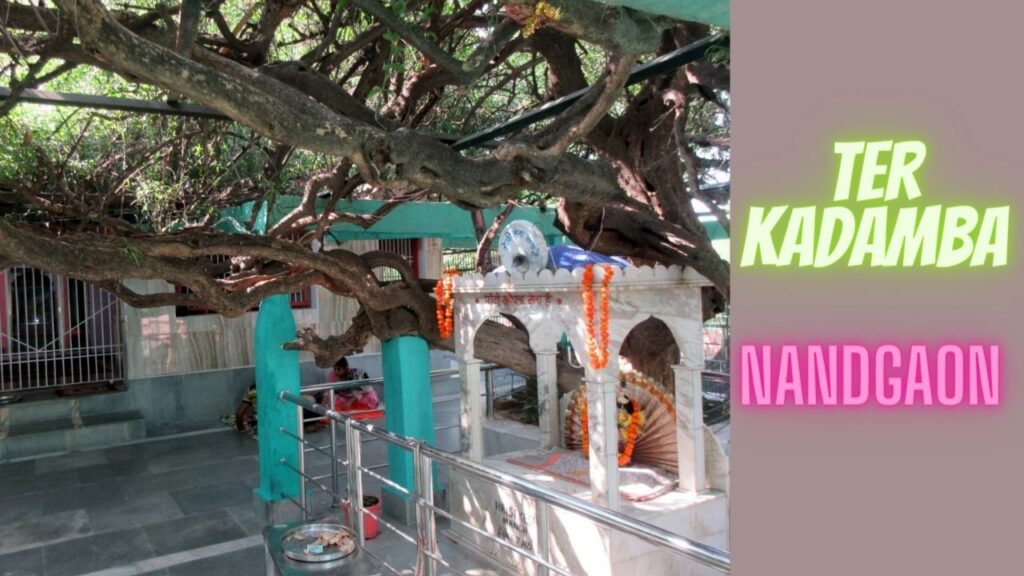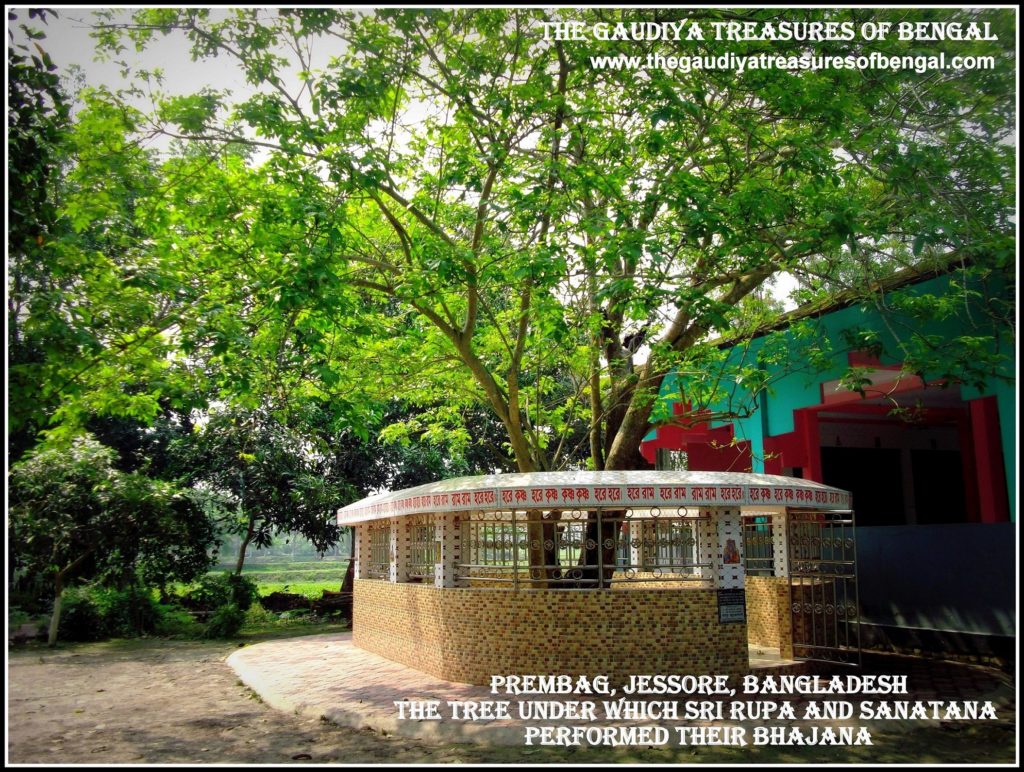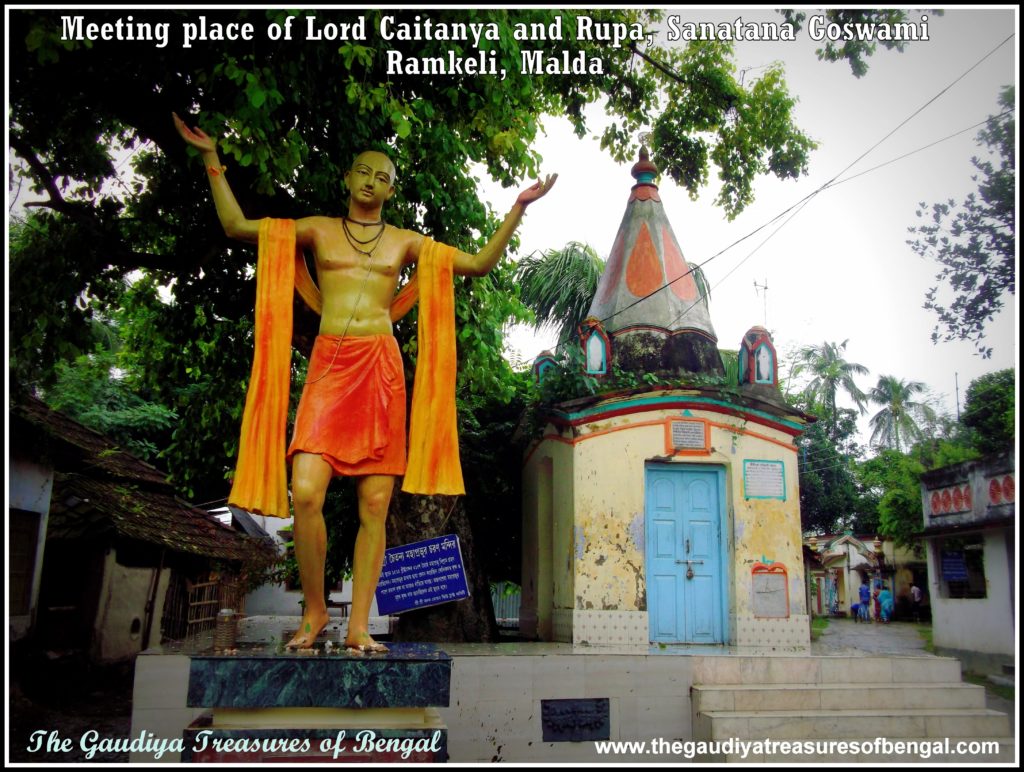
Ter Kadamba, situated midway between Yavat and Nandgaon, is one of the most notable sites of Vraja Mandala. Here, a small temple has been constructed in the midst of a group of Kadamba trees (burflower trees). This is also a place of Krishna’s rasa Leela and hence a platform has been constructed to commemorate this pastime. It is believed that Krishna used to bring His cows to graze at this place. Later when it was time to return home, He used to climb up on the Kadamba tree and play on His flute. Hearing Him play, the cows would immediately return. Krishna would then count each cow on His jeweled necklace before departing for Nandgaon. Sometimes, under the gentle light of a full moon, Krishna would climb this tree and play upon His flute to call upon His sakhis. Radha and the other gopis would then leave their homes to respond to the call of their beloved. The surrendered Gopis would then engage in Rasa dance with Krishna. Since Krishna climbed upon the Kadamba tree and played His flute to call (ter) the cows and gopis, this place is known as Ter-Kadamba.

